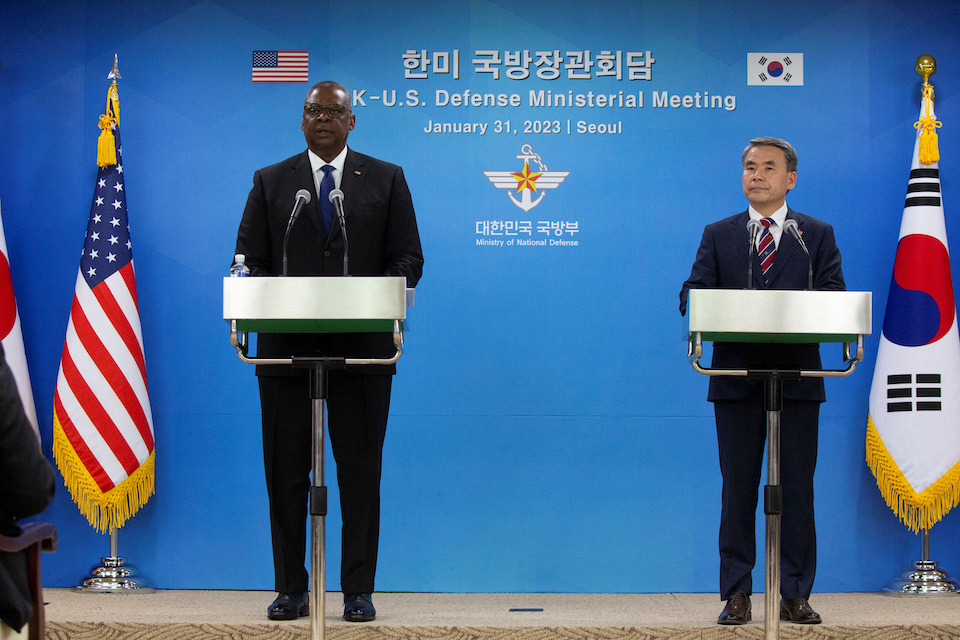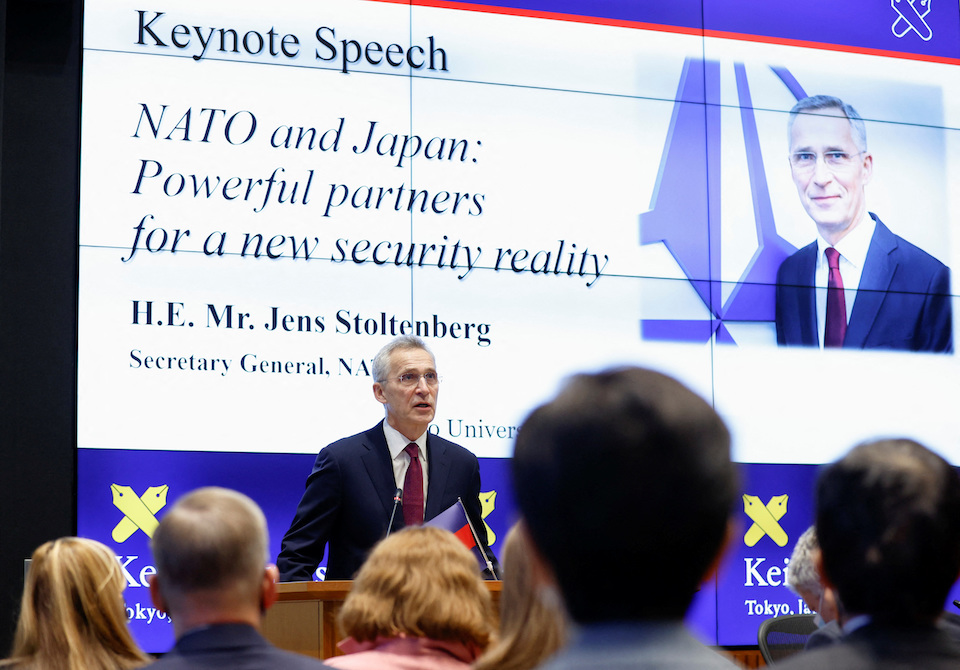
4V February 2023, the day the Americans shot down a Chinese “spy balloon” over South Carolina over the Atlantic, will go down in history for a number of reasons.
This was the first time since World War II that US forces had shot down a foreign “aircraft” over US soil. The last time something “similar” was done was back in July 1942, when American anti-aircraft gunners shot down a Japanese Mitsubishi A6M2 Zero Model 21 over Alaska. For the record, it is worth noting that this aircraft was eventually recovered by the Americans after it crashed near Akutan Island… by revealing to them some technological/military secrets of the Japanese, the incident is known as “Akutan Zero”. It is noted that now the United States hopes to achieve something similar with the wreckage of a Chinese balloon, which they are in a hurry to pick up from the Atlantic.
However, February 4, 2023 will go down in history for another reason, as for the first time in the annals of their active operations, American F-22 Raptor fighters hit a flying target with an air-to-air strike (“F-22 carried out the first air-to-air strike in China balloon fighter,” writes Bloomberg).
However, behind the aforementioned “innovations” hides its overall picture. Chinese American competition which has not stopped escalating in recent years (arguably since Obama’s second term, if not even earlier) … pulling the arms race in the wider Asian region also on an escalatory trajectory.
“China And North Korea they are building up their military power and their nuclear arsenals,” writes Cathy Stollard of the Woodrow Wilson International Center for Scientists in the New Statesman. “The United States is rushing to send weapons to Taiwan. OUR Australia builds nuclear submarines. OUR India wants to increase its defense budget by 13%. For the first time in three decades South Korea has announced that it will even consider acquiring its own nuclear weapons if the threat from Pyongyang continues to grow… while Seoul is also ramping up joint military exercises with the US,” Stallard continued, portraying an atmosphere of escalating tensions. a tension centered, of course, among others, on Japan… as the third largest economy in the world.
In the fall of 2022, the Biden administration published new American national defense strategy (National Defense Strategy – NDS 2022). A strategy that, despite the war in Ukraine, continues to look more at China and less at Russia, viewing Beijing as a “challenge to the Indo-Pacific” and as a “multi-sectoral threat.”
Around the same time, before the end of 2022, he also made public Japan her own news National Security Strategy (Japan’s National Security Strategy): A truly groundbreaking text that echoes the post-war pacifist attitudes of past decades and opens Japan into a new era of heightened militarism and war-threatening tension.
According to official Japanese statements, the security situation around the island is now more “harsh” and more “difficult” than at any other time since World War II. In this context, and based on what is stated in Japan’s new strategy: Xi Jinping’s position on China “represents an unprecedented strategic challenge to Japan’s security,” North Korean Kim Jong-un’s military actions “pose an even more serious, imminent threat to Japan.” national security of Japan” (it is recalled that a few months ago a North Korean ballistic missile flew over Japan before falling into the Pacific Ocean), and Sino-Russian “strategic coordination” raises “acute security concerns.”
According to its critics, China has in recent years “militarized” tensions in its neighborhood by limiting the independence of institutions and freedoms to “semi-autonomous” Hong Kongthreatening a military invasion of the autonomous region Taiwanmaking territorial claims against its neighbors (on the Spratly and Senkaku/Diaggio islands, Scarborough reef, etc.), even creating artificial islands in the South China Sea, which it has militarized, while legal cases have also been initiated for its actions: for example at the Permanent Court of Arbitration in The Hague after an appeal Philippines (Case No. 2013-19 / South China Sea Arbitration: Republic of the Philippines v. People’s Republic of China).
In such conditions of change and tension, the loser in World War II Japan it is also changing: it abandons the pacifist constraints of past decades and embarks on a path of military strengthening and renewal in order to acquire forces that can successfully carry out – if necessary – even aggressive (long-range) military operations.
Hundreds of tomahawks
“Japan wants to buy up to 500 U.S. Tomahawk cruise missiles by the end of 2027,” Japan Times wrote last November.

“The decision to buy hundreds of Tomahawks – about 400 to 500 – will send a signal to China and North Korea that Japan is serious about self-defense and that the bilateral alliance (including the US-Japanese one) is perhaps the most important from a military point of view in the region – grows stronger in the face of threats from Beijing and Pyongyang,” wrote the Washington Post last December.
In this context of events, voices are heard claiming that the real “Zeitenwende(in the sense of a “historical turn” in the country’s worldview) not its Germany (announced by Olaf Soltz a few days after the Russian invasion of Ukraine but without spending the next few months from theory to practice) otherwise it Japan.
Japan’s new strategy
“Japan’s defense budget, which has accounted for about 1% of GDP over the past half century, will grow by 60% over the next five years. […] If these plans come to fruition, Japan will end up with the third largest defense budget in the world after the US and China, while it currently ranks ninth,” comments Stallard.
Importance of Asia
And all this against the backdrop of a district like his Indo-Pacific And her Asiathat is, a region that: stands out as a geographic hub of world trade and shipping – possesses nuclear weapons (China, India, Pakistan, North Korea, possibly also South Korea in the future) – has about 60% of the world’s population (more than 4 billion inhabitants) ) – and collects considerable industrial and production forces and opportunities.
It is no coincidence that the indicated area was recently visited by US Secretary of Defense Lloyd Austin (who was in South Korea And Philippines) and its general secretary NATO Jens Stoltenberg (find in South Korea And Japan).

As for Beijing, it took these visits and the “strategic goals” behind them rather negatively. It is significant what is mentioned in a related publication (“NATO General visits Asia, intends to bring “bloc confrontation in Europe” to the region”) by the Chinese Global Times, according to which “… the US and NATO are trying to transfer to Asia the “confrontation” that led to military conflicts in Europe”, while, in particular, “the US intends to use its allies in the region to contain China and disrupt regional integration and economic recovery by spreading a dangerous Cold War mindset”.
Source: Kathimerini
Anna White is a journalist at 247 News Reel, where she writes on world news and current events. She is known for her insightful analysis and compelling storytelling. Anna’s articles have been widely read and shared, earning her a reputation as a talented and respected journalist. She delivers in-depth and accurate understanding of the world’s most pressing issues.